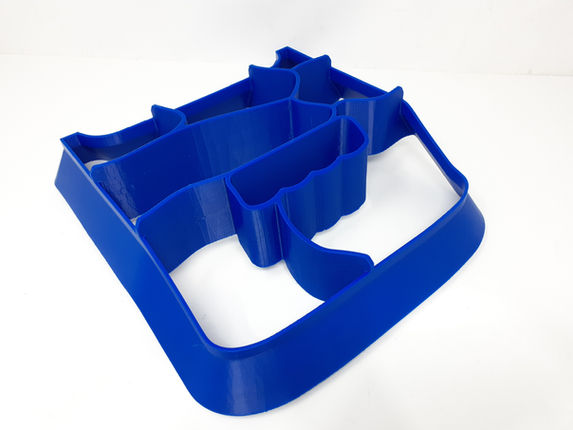Industrial Fused Deposition Modeling (FDM)
Fused Deposition Modeling (FDM) is the most accessible and well known 3D printing technology. It uses a continuous filament of material, typically plastic, to build up a three-dimensional object layer by layer. The filament is fed through a heated extruder, which melts it and deposits it in precise locations according to a 3D model.
Desktop and industrial FDM technologies are very similar in principle, but industrial FDM often has larger and more robust hardware. It also typically utilizes more advanced software and PLC control systems to provide greater speed and higher accuracy. However, the most common distinction is that industrial FDM machines incorporate a fully heated build chamber that is capable of reaching temperatures up to 200 degrees Celsius. This heated chamber helps maintain a constant temperature across a part while it is being printed, which reduces the thermal stress that can build up, mitigating issues like warping and reduced layer adhesion.
All of the additional capabilities of industrial FDM enable these machines to print with advanced ultra-polymer materials, such as PEEK, PEKK, and Ultem. These high performance materials can often be used to replace metal parts in high temperature environments and applications requiring chemical resistance.
Already have a 3D model and want to get a quote on Industrial FDM services?

Materials: ABS, ASA, PA12, PA-CF, PP-CF, PCTG, PEEK, PEKK, Ultem 9085 <-- Learn More
Standard Dimensional Accuracy: ± 0.5% with a lower limit of ± 0.5 mm (± 0.020")
Post Processing Options: Threaded Inserts, Sanding, Painting, Coating, Vapor Smoothing
Design & Production Considerations:
-
Diverse material library with many color options available
-
Requires support material for any geometry greater than 45 degrees to the build surface which can generate a rougher surface finish relative to unsupported surfaces
-
Typically uses a 0.4mm to 0.8mm sized nozzle - thin walls and very fine details may not render fully
-
Layer heights range from 0.1 to 0.3mm - shallow angles and certain features may yield visible layers and nozzle/tool travel paths.
Ideal Applications:
-
Parts being used in demanding environments - high temperature and chemical exposure
- Prototyping or low volume production of parts that may be too large for other technologies
- Low to mid-volume production of high performance polymers
Example Gallery:










